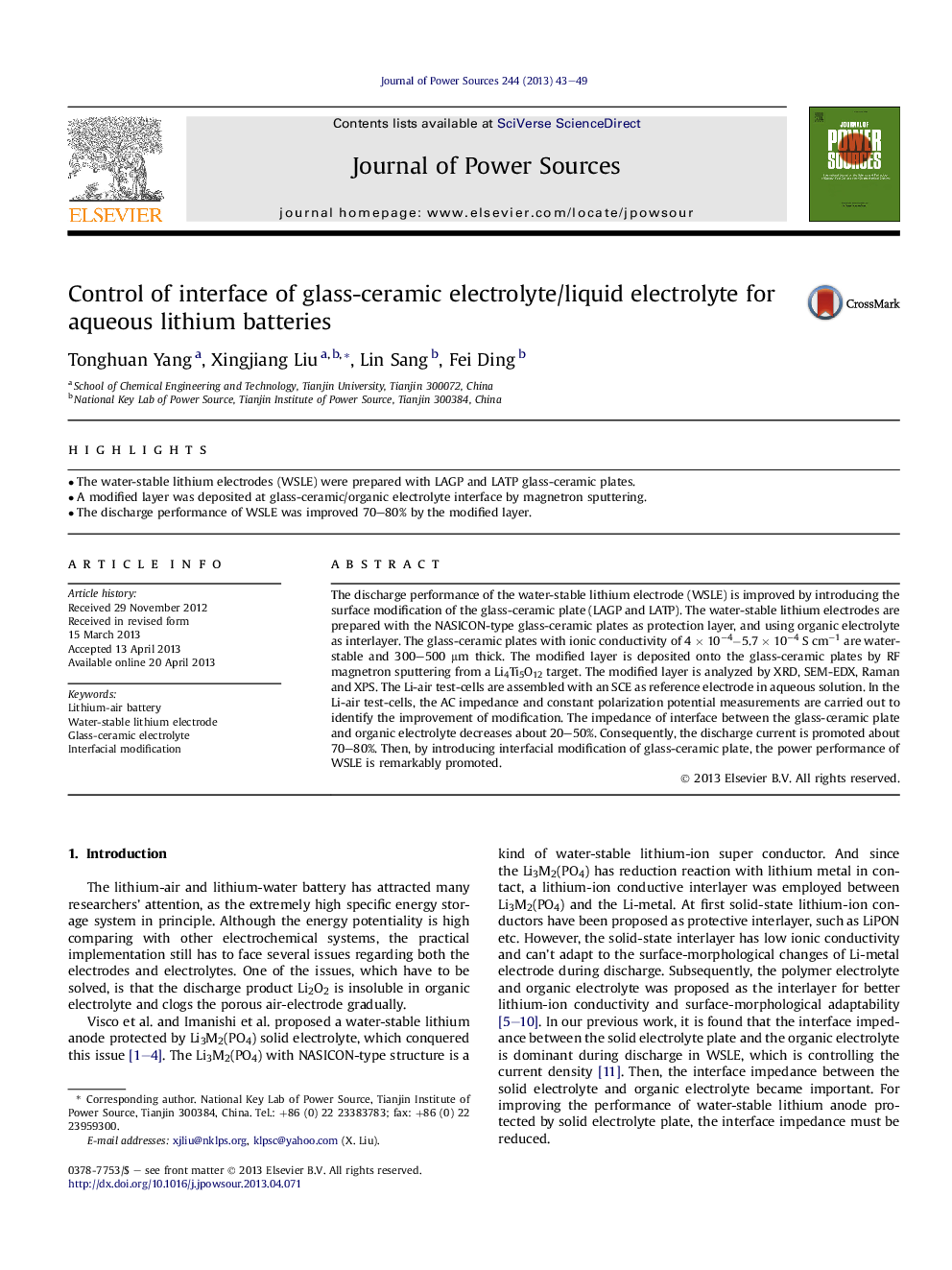| کد مقاله | کد نشریه | سال انتشار | مقاله انگلیسی | نسخه تمام متن |
|---|---|---|---|---|
| 1287441 | 1497988 | 2013 | 7 صفحه PDF | دانلود رایگان |

• The water-stable lithium electrodes (WSLE) were prepared with LAGP and LATP glass-ceramic plates.
• A modified layer was deposited at glass-ceramic/organic electrolyte interface by magnetron sputtering.
• The discharge performance of WSLE was improved 70–80% by the modified layer.
The discharge performance of the water-stable lithium electrode (WSLE) is improved by introducing the surface modification of the glass-ceramic plate (LAGP and LATP). The water-stable lithium electrodes are prepared with the NASICON-type glass-ceramic plates as protection layer, and using organic electrolyte as interlayer. The glass-ceramic plates with ionic conductivity of 4 × 10−4−5.7 × 10−4 S cm−1 are water-stable and 300–500 μm thick. The modified layer is deposited onto the glass-ceramic plates by RF magnetron sputtering from a Li4Ti5O12 target. The modified layer is analyzed by XRD, SEM-EDX, Raman and XPS. The Li-air test-cells are assembled with an SCE as reference electrode in aqueous solution. In the Li-air test-cells, the AC impedance and constant polarization potential measurements are carried out to identify the improvement of modification. The impedance of interface between the glass-ceramic plate and organic electrolyte decreases about 20–50%. Consequently, the discharge current is promoted about 70–80%. Then, by introducing interfacial modification of glass-ceramic plate, the power performance of WSLE is remarkably promoted.
Journal: Journal of Power Sources - Volume 244, 15 December 2013, Pages 43–49